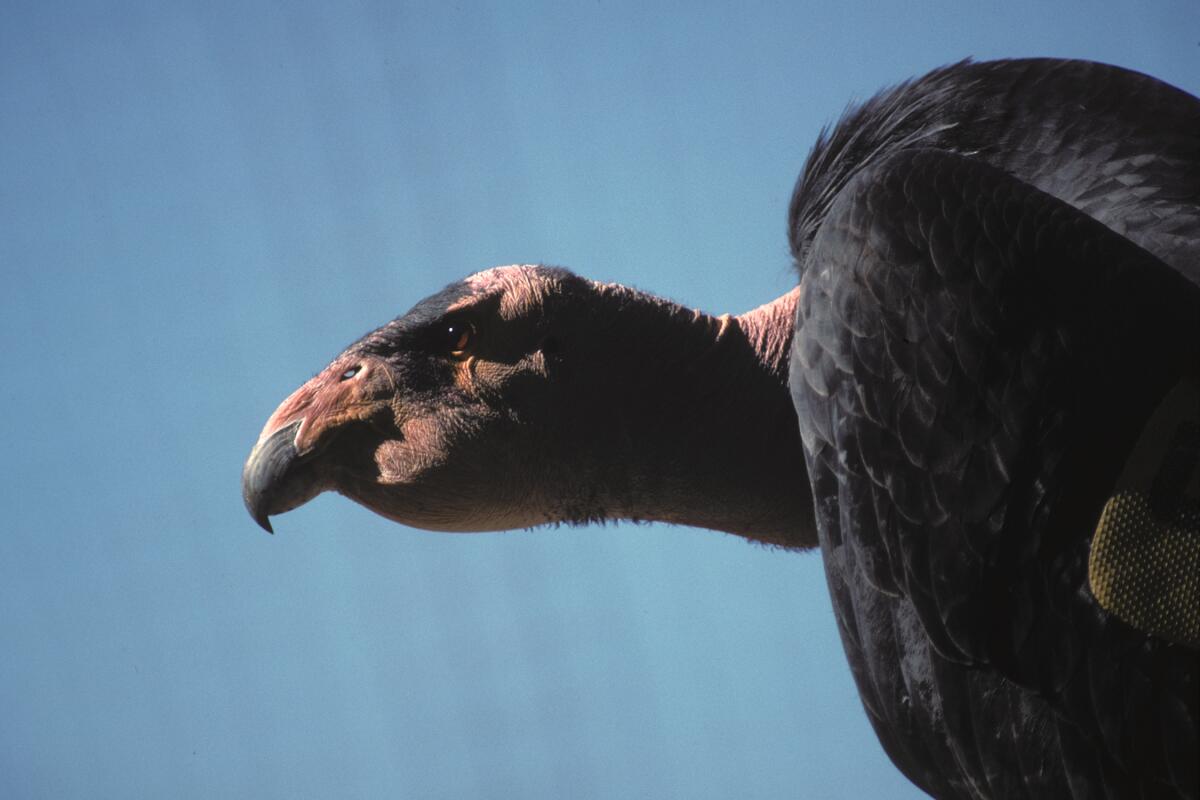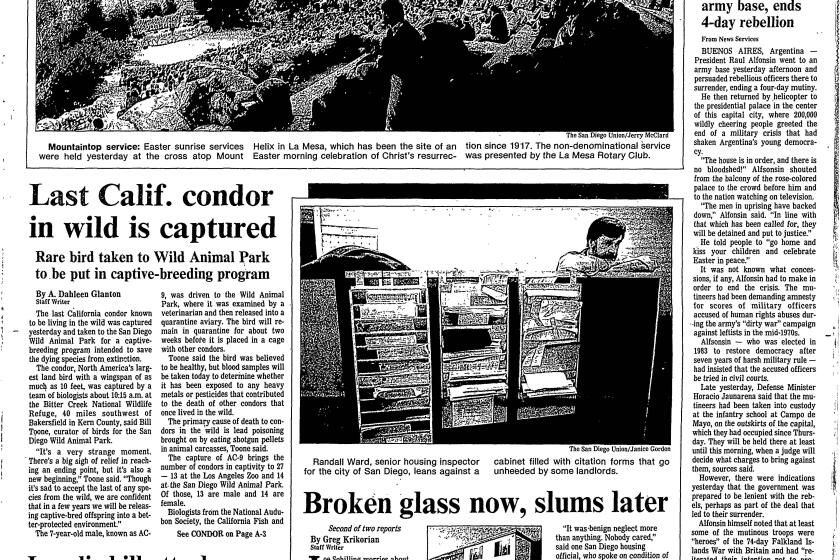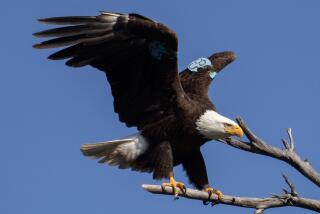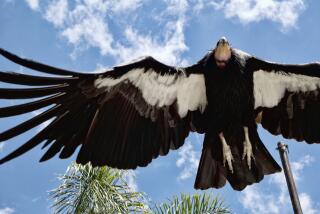âVirgin birthsâ: California condors can reproduce asexually, study says

Heâs got his motherâs eyes, and his fatherâs ⌠nothing.
A scientific team led by the San Diego Zoo Wildlife Alliance announced Thursday that California condors can reproduce without having sex. Researchers made the finding after genetic tests showed that two condors born in captivity didnât have fathers.
Yes, fathers. Thatâs not a misspelling of âfeathers.â
This story is for subscribers
We offer subscribers exclusive access to our best journalism.
Thank you for your support.
This phenomenon, known as parthenogenesis, has been seen in certain insects, fish, reptiles and a few birds. . But no one knew until now that female California condors could have offspring without males, a head-scratching finding that raises questions around how often this occurs and whether it matters in the wild.
Another unanswered question: Why did this happen? The mothers of both condors had each mated successfully before and were housed with a male at the time they reproduced asexually.
âI thought it was pretty remarkable,â said Kevin Burns, an ornithologist at San Diego State University, who was not involved in the study. âThat raises the issue that we should be looking for this more, I think.â
The discovery was made by the San Diego Zoo Wildlife Alliance, which runs the zoo and Safari Park and has played a key role in helping California condors claw their way back from the brink of extinction.
On Easter Sunday 1987, the last known wild California condor was captured 40 miles southwest of Bakersfield He was taken to what is now called the San Diego Zoo Safari Park, to be put in a captive-breeding program.
By 1982, there were only 22 of the iconic birds left. By the end of 2019, that count rose to 525, with 306 condors flying freely across California, Arizona, Utah and Baja California. A captive breeding program run out of the Safari Park has accounted for much of that rebound, and the zoo and Safari Park have hatched more than 160 condors over the years.
Throughout this ongoing effort, researchers have collected a vast repository of condor blood, feathers and tissue. The DNA in these samples can reveal how closely two condors are related and how traits are passed down from one generation to the next.
Researchers didnât expect any major surprises when they began testing samples from more than 900 condors around 2013. That all changed when Leona Chemnick, who was then a researcher at the zooâs institute for conservation research, told director of genetics Dr. Oliver Ryder she needed to talk with him about some puzzling findings.
Ryder, who was leaving the office, asked Chemnick to walk and talk as he headed to his car. As they did, she explained that two condors born in captivity didnât seem to have genetic material from their fathers at any of the 21 different DNA regions Chemnick checked (and double-checked).
What was also odd, she added, was that while each condor had two DNA copies at each site, those copies were all identical.
That stopped Ryder dead in his tracks.
Did the birds inherit only maternal copies, he asked?
Yes.
Were they males?
Yes.
âI said, âYouâve just shown that thereâs parthenogenetic development in California condors,ââ Ryder recalls. âI still get a chill and goose bumps when I tell that story.â
Ryder and colleagues reported their results in the Journal of Heredity, the official publication of the century-old American Genetic Assn.
Though it may seem bizarre for a female bird to have male chicks on her own, sex in birds and people isnât determined the same way.
In humans, females have two X chromosomes, while males have an X and a Y. In birds, itâs the opposite. Males have two Z chromosomes while females have a Z and a W, meaning that an unfertilized egg already has the genetic material needed to form a male chick.
Itâs happened before, says Reshma Ramachandran, a researcher with Mississippi State Universityâs department of poultry science, noting that reports of parthenogenesis in pigeons, quails, chickens and turkeys date to the 1960s.
But despite 15 years of trying, scientists never got a single quail to hatch by parthenogenesis, though they saw clear signs of early embryo development in unfertilized eggs. They did, however, have one male turkey grow to adulthood, something other researchers have also seen in other turkeys and chickens. But the bird was small and failed to fertilize hens even after researchers tried artificial insemination.
That raises the question of whether parthenogenesis in birds is important in the wild. Right now, scientists arenât sure. Some speculate that rare and spread-out species such as condors could benefit from reproducing asexually if they canât find a mate. But thatâs true only if the offspring survive and pass down their genes to the next generation.
One of the parthenogenesis condors, hatched at the Safari Park in 2001, was released into the wild but died at Big Surâs Ventana Condor Sanctuary in 2003. The other, hatched at the Los Angeles Zoo in 2009, died at the Oregon Zoo in 2017. The latter bird was underweight and suffered from a curved spine, and neither condor reproduced before it died.
Scientists wouldnât have spotted the condor cases without their detailed genetic analysis. After all, Ryder says, if you see two birds caring for a clutch of chicks, itâs natural to assume the maleâs the father. This new finding calls that assumption into question.
âOne of the meanings of this is that we might think we understand life, but we shouldnât take it for granted,â he said. âThere may be more going on out there than we know about.â
More to Read
Sign up for Essential California
The most important California stories and recommendations in your inbox every morning.
You may occasionally receive promotional content from the Los Angeles Times.












